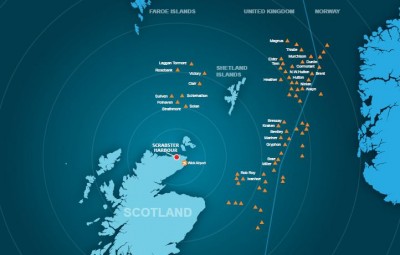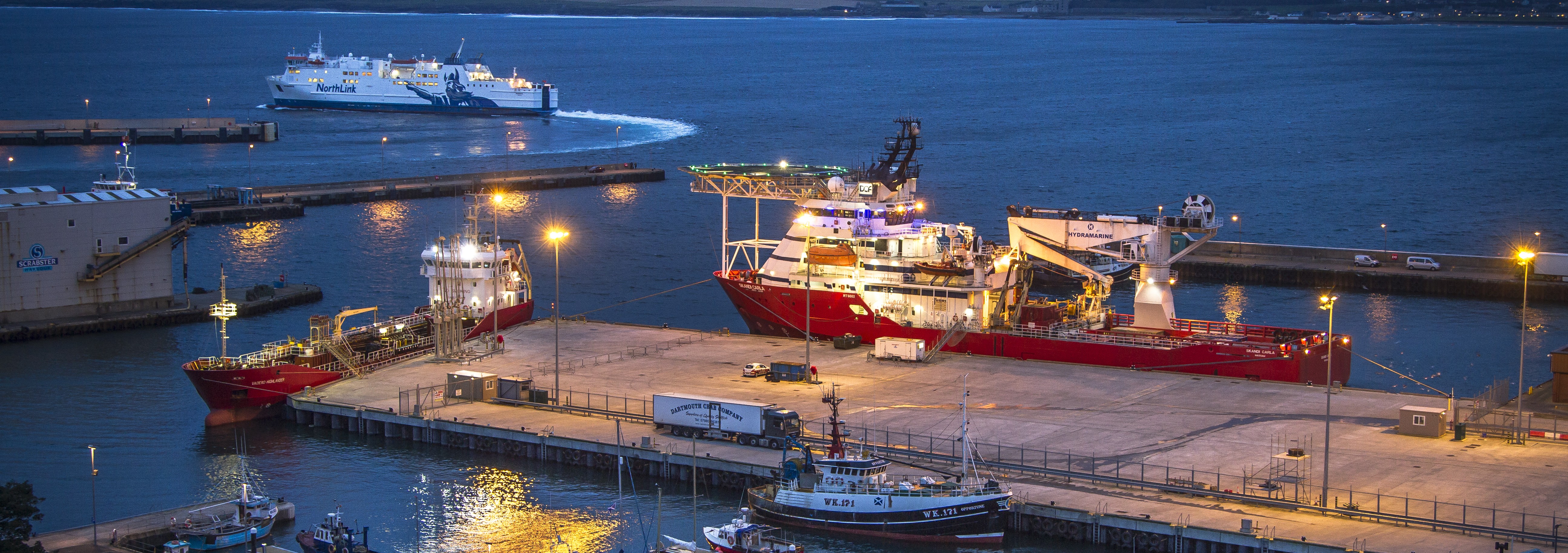About Scrabster Harbour

At Scrabster Harbour our team is committed to providing a high quality, reliable service offering to our clients.
Scrabster’s strategic location, modern infrastructure and high quality, reliable services offers a competitive advantage across a range of sectors: cargo, cruise, ferries, fishing, oil and gas and renewables. The harbour offers extensive facilities, with 24/7, 365 days a year access to the port. Scrabster Harbour possesses a strong local supply chain and is one of the UK’s leading whitefish and shellfish landing ports.
The harbour is overseen by Scrabster Harbour Trust, established in 1841 and governed by its own legislation. The Trust seeks to serve the local community and all surpluses created are reinvested into the port.
The Trust Board of Management currently consists of seven members, comprising 6 non-executive and one executive member. Non-executive members are appointed, following a public appointments process, for a period of three years and may be eligible for reappointment for a further 2 terms. The Board has the power to co-opt additional members.
There has been significant reinvestment made in the harbour in recent years to improve the infrastructure and facilities offered to clients. Over £38 million has been spent since 2011.
Scrabster Harbour Trust Business Strategy
Scrabster Harbour Trust business strategy is focused on:
- Growth in energy related port activity (oil and gas, marine renewables) and cruise ship activity:
- For oil and gas, Scrabster seeks to become an integrated supply base supporting activity in West of Shetland and in the Northern North Sea.
- For marine renewables, in addition to supporting construction / installation project phase activities, the port seeks to be an operations and maintenance base for offshore renewable activity.
- For the cruise industry, Scrabster seeks to accommodate larger vessels and contribute to the continued growth of Scottish cruise tourism.
- The retention and growth of ferry, fishing, general cargo and cruise activity:
- For the ferry service, the Trust will endeavour to maintain the life line classification of the service and lobby to ensure that the interests of Scrabster are promoted in the tendering process.
- For fishing, the Trust will seek to maintain and improve on the landings at Scrabster through modern infrastructure.
- For the seafood sector, processing and other value added activities will be encouraged.
- For general cargo activity the Trust will work with stakeholder partners to provide an efficient service to port users to promote the use of the harbour.
The strategy seeks to deliver:
- Higher quay and laydown utilisation.
- Increased quay and laydown area space.
- Increased vessel numbers and cargo throughput.
All of this will result in increased port revenues that can be re-invested in the harbour for the commercial benefit of harbour users and the wider Caithness economy.
Climate Change and a Net Zero Economy
The Trust is aware of the UK and Scottish Government policies and targets to address climate change and move to the goal of net zero greenhouse emissions. This will require change across all sectors including ports and harbours. In 2021 the carbon footprint of the Trust’s activities was quantified. This provides a baseline to measure improvement in the areas under the Trust’s control.
Property and Estate Strategy
The Trust’s property and estate strategy aligns with and complements overall port strategy. It also aligns with the aims of the Caithness and North Sutherland Regeneration themes of diversification away from an economy dependent upon Dounreay.
The Harbour Estate consists of the port area extending to 10.42 hectares and development land at Scrabster Farm extending to 14 hectares. The port area is a mixture of outright ownership and leasehold tenure from the Crown Estate Commissioners. The land at Scrabster Farm is owned outright by the Trust and is currently classified as an enterprise area by Scottish Government.
The Trust derives income from a diverse property portfolio.
- Ground rents
- Residential property
- Storage and storage areas
- Office and business accommodation
- Industrial units
Strategy and Policy Going Forward
- Property strategy aligns with overall business strategy. Any property and estates proposal needs to be assessed, not in isolation, but with regard to overall port strategy.
- Property strategy looks to the medium to long term (5-10 year timeframe) rather than short term revenue maximisation.
- The limited availability of quayside laydown areas needs protection and careful management, although available capacity has increased due to recent investments.
- Experience elsewhere emphasises keeping laydown areas as clear and flexible as possible.
- Experience at other ports has demonstrated that longer term port revenues are maximised through ports owning and developing their own land and buildings. Scrabster will seek to follow the same model subject to affordability and funding restraints.
- For marine renewable activity there has been limited tidal activity to date, however, Crown Estate Scotland’s Scotwind Offshore Wind leasing round offers a significant port opportunity supporting the Offshore Wind Sector. Scrabster seeks to be an O&M (Operations and Maintenance) base for the sector but remains open to any opportunity to support fabrication activities.
- For Oil & Gas activity – Scrabster offers shorter steaming time, congestion free and fast vessel turnaround. This requires available and flexible quayside and back up space.
Delivering The Strategy
The property and estate strategy will be delivered through the following work streams and through partnership working with interested parties and public agencies:
1. Port Infrastructure – the maintenance and improvement of port infrastructure will continue to be progressed.
2. Property acquisition – The Trust has previously acquired property to support port activity and will seek to secure additional properties at the Harbour.
3. Land reclamation – The feasibility of additional land reclamation will be pursued.
4. Reconfiguration – The existing harbour estate layout will be examined to ensure space is best configured.
All property related requests and applications will be assessed with reference to the above policy.
Strategic Programme:
To support this property strategy, a 10 year, multi phase development programme for the harbour area has been produced showing jetty area expansion, land reclamation and building. This is based on a number of assumptions that will be refined and reviewed going forward.



